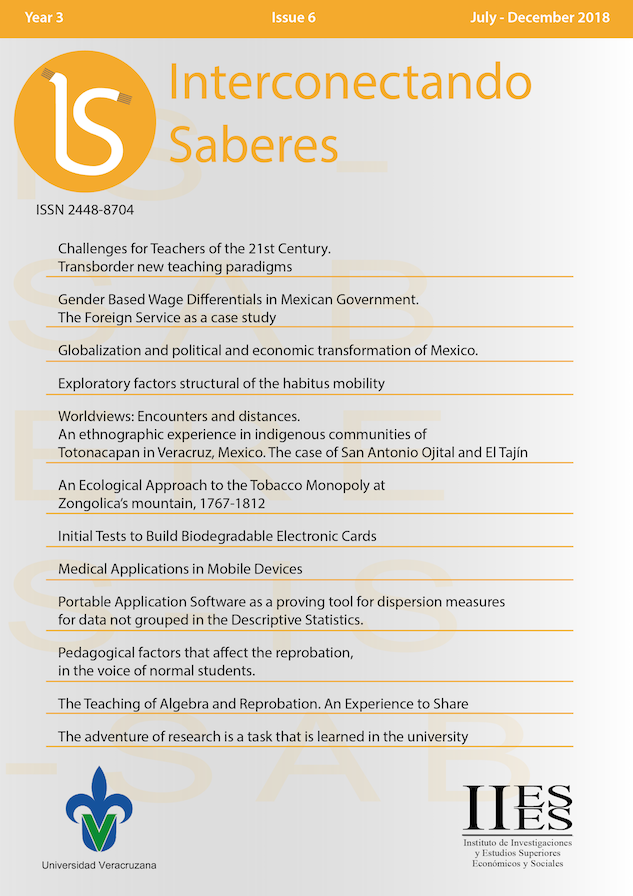Abstract
The increase in urban solid waste can be explained as a result of multiple factors, among the most important urban growth, industrial development, technological changes and changes in consumption patterns of the population among others. This relationship is observed in other regions of the world, which means that at higher levels of consumption, greater volume of waste. In the Mexican case, between 2003 and 2015, the gross domestic product and the generation of waste grew at practically the same rate. However, in some cases the contribution to the total national production of RSU by some entities deviates markedly from the general trend. The important factors to be considered when selecting an alternative material for the elaboration of electronic cards is the degree of humidity absorption, insulation resistance and dielectric constant.
References
Allen, A. (2001). Containment landfills: the myth of sustainability. Engineering Geology, 60(1–4), 3–19. https://doi.org/10.1016/S0013-7952(00)00084-3
Belloch, C. (2000). Recursos Tecnológicos (Tic). Unidad de Tecnología Educativa, 1–8. Retrieved from https://www.uv.es/bellochc/logopedia/NRTLogo1.pdf
Corral Torres, S., Barrientos Becerra, B., Hernández Berriel, M. del C., Gómez Beltrán, G., & Macedo Miranda, M. G. (2011). Afectación ambiental del tiradero a cielo abierto de Almoloya del Río, Estado de México. In S. Benitez, Ojeda, S. E. Cruz Sotelo, P. A. Taboada González, & Q. Aguilar Virgen (Eds.), Hacia la sustentabilidad: Los residuos sólidos como fuente de energía y materia prima (pp. 253–257). Universidad Autónoma de Baja California.
Gupta, K. M., Gupta, N., & Tiwari, A. (2015). Advanced Electrical and Electronics Materials: Processes and Applications. (I. Scrivener Publishing LLC y John Wiley & Sons, Ed.). Wiley.
Kiss Köfalusi, G., & Encarnación Aguilar, G. (2006). Los productos y los impactos de la descomposición de residuos sólidos urbanos en los sitios de disposición final. Gaceta Ecológica, (79), 39–51.
Martínez Rivera, C. (2008). A China la basura electrónica. Retrieved December 29, 2018, from http://www.adendi.com/archivo.asp?num=57535&year=2008&month=7&keyword=
Mexicana, D., Carrillo, C., Pr, M. S. D., Toluca, P., & Licenciatura, P. (2009). Materiales de resinas compuestas y su polimerización. Revista ADM Organo Oficial de La Asociacion Dental Mexicana., LXV(4), 10–17.
Molina, M. J., & Rowland, F. S. (1974). Stratospheric sink for chlorofluoromethanes: chlorine atom-catalysed destruction ozone. Nature, 249(5460), 810–812.
SEMARNAT. (2015). Informe de la Situación del Medio Ambiente en México. In Informe de la Situación del Medio Ambiente en México. Compendio de Estadísticas Ambientales. (Primera Ed). Ciudad de México. Retrieved from https://apps1.semarnat.gob.mx:445/dgeia/informe15/tema/pdf/Cap7_Residuos.pdf
Tetrapak.com. (2016). Tetra Brick envases. Retrieved December 29, 2018, from https://www.tetrapak.com/

